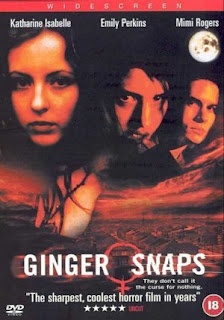
(The comparison image I found on a design blog called Eithin, which had some interesting analysis that might explain why I like the comic better.)
Of course, this is not Akerman's fault: superheroines are always sexier in print than on the screen. I'll grant a couple of exceptions, then prove the rule.
Mystique:


Played by Rebecca Romijin-Stamos, she's a lot sexier than comic-book and animated versions.
Wonder Woman:

 Played by Lynda Carter is comparably sexy to her modern comic-book alter-ego, and certainly sexier than the original newsprint version.
Played by Lynda Carter is comparably sexy to her modern comic-book alter-ego, and certainly sexier than the original newsprint version.Invisible Girl/Woman:


I haven't yet gotten up the stomach to watch the Fantastic Four movies, but I'm willing to grant that Jessica Alba can do a sexier portrayal of the housewifely Sue Storm.
But most of the time it goes the other way:
Rogue:

 Why change this sexy Cajun into an awkward, accentless adolescent? What you lose: great big tits, tons of superpowers she gained by draining other mutants, confidence to stand beside other X-Men as an equal, and a facade of independence developed to cope with her inability to ever get physically close to another human being. In particular, the tension between her confidence in her power and her emotional vulnerability when anyone threatens to actually get close makes her character interesting and complex. What you gain: teenage angst, a lame Iceman love triangle, and an equally lame mentor relationship with Wolverine.
Why change this sexy Cajun into an awkward, accentless adolescent? What you lose: great big tits, tons of superpowers she gained by draining other mutants, confidence to stand beside other X-Men as an equal, and a facade of independence developed to cope with her inability to ever get physically close to another human being. In particular, the tension between her confidence in her power and her emotional vulnerability when anyone threatens to actually get close makes her character interesting and complex. What you gain: teenage angst, a lame Iceman love triangle, and an equally lame mentor relationship with Wolverine.Storm:


Storm, like many of the X-Men has undergone some drastic changes over her 40+ years of existence in the Marvel universe. In changing her to real life, not only did Storm lose one of her enduring features (great tits), but she became a much flatter character. We know Halle Berry can act (see Monster's Ball and a surprisingly good job in Swordfish), but we also know she will let herself totally phone it in and go through the motions to collect a paycheck (Catwoman). Over the course of the X-Men movies, she became less and less of the former and more and more of the latter.
Jean Grey:

 The first incarnation where I met Jean Grey, the old X-Men cartoons, taught me that redheads could be sexy. The cliche is that they're unstable, in my personal experience, they were simply bookish, and most live-action portrayals showed them as comic. Even Ginger, from Gilligan's Island, should have been sexy but wasn't. She paled beside Mary Ann. Despite her rockin' bod, she was ditzy and bland as a character.
The first incarnation where I met Jean Grey, the old X-Men cartoons, taught me that redheads could be sexy. The cliche is that they're unstable, in my personal experience, they were simply bookish, and most live-action portrayals showed them as comic. Even Ginger, from Gilligan's Island, should have been sexy but wasn't. She paled beside Mary Ann. Despite her rockin' bod, she was ditzy and bland as a character.All this to say, Jean Grey was sexy in the cartoon. Smart, strong, independent but emotionally vulnerable, and with great tits she was a joy to watch, despite the limited quality of the animation. And then she became the Phoenix. Throw me into that fire.
Famke Janssen seems like a good choice to play her. She's got a good bod, some acting experience, and she understands the role, as shown by the quote on her Chickipedia page: "We've always been ready for female superheros. Because women want to be them and men want to do them." Perfect. But she does a moderate turn at best as Jean Grey. Costuming is partly to blame, again, when instead of using her awesome Phoenix alter-ego, they just put her in a trench coat much of the time.
And I could mention others like Electra, Batgirl, Batman she-villains Catwoman and Poison Ivy, even Aeon Flux.
Do I have an argument here? Yes, and here it is: superheroines are always sexier in comics because:
3) Their clothes are unreal--what fabric can cling like that & still not bunch, bulge, or tear?
2) They're unreal--we know you can't have those tits & that body, but a man can dream, can't he?
1) They're deeper--comics don't spend a lot of time developing character, but you throw a crumb out here and there over the course of decades & it adds up to something. Actresses rarely inhabit the roles, they just go through the motions, and nothing is less sexy than just going through the motions, which is Malin Akerman's chief sin.










